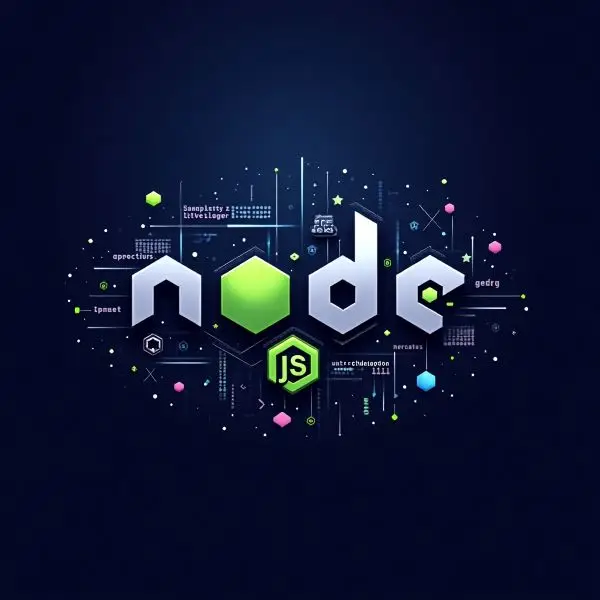
Introduction to MongoDB: Your First Steps into NoSQL Databases
The world of data management has undergone significant transformation over the years, evolving from traditional SQL databases to more flexible and scalable NoSQL solutions. At the forefront of this revolution is MongoDB, a versatile NoSQL database that caters to the dynamic needs of modern applications. If you're curious about why so many developers and companies are opting for NoSQL solutions, you're in the right place.
In this article, we're opening the doors to MongoDB and guiding you through its foundational concepts. You'll gain insights into how MongoDB differs from conventional databases and understand its unique features. By the end, you will not only appreciate the transition to NoSQL but also feel equipped to start using MongoDB in your projects. Our goal is to make this journey informative and engaging, turning complex ideas into simple, digestible knowledge tailored just for you. Let's embark on this exciting exploration of MongoDB, your new companion in the world of NoSQL databases.
List of Contents
Understanding NoSQL and MongoDB
What is NoSQL?
In the modern era of data management, the need for storing and querying vast, diverse types of data has grown exponentially. This is where NoSQL databases come into play. Unlike traditional SQL databases, which are built on fixed table structures and strictly defined schemas, NoSQL databases offer a flexible schema design and are highly scalable. This makes them ideal for big data applications where volumes can expand tremendously and where the nature of the data can't always be anticipated.
NoSQL stands for "Not Only SQL," a term used to encompass a wide array of database technologies developed to handle different kinds of data models such as document, graph, key-value, and column-family. Each model is optimized for specific types of data handling.
Introducing MongoDB
MongoDB stores data in dynamic JSON-like documents (BSON), providing greater agility and flexibility. Through its unique document-based design, it seamlessly handles a wide range of data types and structures.
Why choose MongoDB? For starters, its capacity to easily evolve and manage unstructured data makes it a favorite among developers handling large, varied datasets—with impeccable speed and an intuitive querying interface to boot. Organizations appreciate how MongoDB scales horizontally as clusters of machines, enabling greater performance with a growing amount of data and number of users.
Basic Concepts of MongoDB
When transitioning from the structured world of SQL to MongoDB's flexible environment, it's essential to understand its core concepts. Unlike relational databases that organize data in rows and tables, MongoDB leverages a document-based model which allows for dynamic and unstructured data management. Let's break down these fundamental concepts:
Documents: The Heart of MongoDB
At the core of MongoDB is the document, which is akin to a record but much more flexible. These documents are stored in a Binary JSON (BSON) format. BSON supports more data types than regular JSON, including dates and binary data, among others. Each document is a set of key-value pairs where schema can vary as documents evolve. This schema-less nature gives MongoDB its renowned flexibility, allowing you to store complex hierarchical data without cumbersome joins typically required in SQL databases.
{
"name": "John Doe",
"age": 29,
"email": "[email protected]",
"skills": ["JavaScript", "MongoDB", "Node.js"]
}Collections: Grouping of Documents
Imagine collections as the equivalent of tables in a SQL database. A collection in MongoDB is a group of related documents. However, unlike SQL tables, collections can store documents with differing schema—some documents might contain fields and values that others do not. This characteristic provides unmatched adaptability, especially useful for projects where requirements frequently change or when dealing with diverse data inputs.
Here's a typical MongoDB hierarchy:
- Database: The overarching container.
- Collections: Clusters of documents.
- Documents: Individual records or entries within a collection.
- Collections: Clusters of documents.
Comparing with SQL
To ground your understanding, think of MongoDB documents as analogous to rows in a table, and collections as tables themselves. Yet, unlike in SQL where the schema is strict and predefined, MongoDB collections host documents that can adapt and transform over time.
Embracing these flexible concepts allows you to exit the rigid world of predefined schemas and linear development, inviting a natural progression tailored to dynamic data and complex queries. As we advance, we will uncover more functions and operations that highlight why MongoDB stands out as a powerful tool for developers.
Setting Up MongoDB
In this section, you'll learn the steps to set up MongoDB across different operating systems, and get familiar with MongoDB Compass, a beneficial tool for visualizing your database.
Installing MongoDB on Different Platforms
MongoDB supports various operating systems, making it accessible no matter your development environment. Here's a quick guide to getting MongoDB installed on Windows, macOS, and Linux.
Windows- Download MongoDB: Navigate to the MongoDB Download Center and select Windows as your operating system.
- Run the Installer: Follow the setup wizard and opt for a complete installation, consider adding MongoDB to your system's PATH for easy command-line access.
- Start MongoDB:: Open the Command Prompt and execute
mongodto start the MongoDB server.
macOS
- Install via Homebrew: Run the following command in your terminal to install MongoDB
brew tap mongodb/brew brew install mongodb-community - Start MongoDB: Use Homebrew services to start MongoDB
brew services start mongodb/brew/mongodb-community - Access Mongo Shell: Simply type
mongoin your terminal to interact with the shell.brew services start mongodb/brew/mongodb-community
Linux
- Download and Import Public Key: Use your terminal to download the MongoDB package and import the MongoDB key file
wget -qO - https://www.mongodb.org/static/pgp/server-5.0.asc | sudo apt-key add - - Create the /etc/apt/sources.list.d/mongodb-org-5.0.list file: and add the repository URL to the package manager (example for Ubuntu):
echo "deb [ arch=amd64,arm64 ] https://repo.mongodb.org/apt/ubuntu focal/mongodb-org/5.0 multiverse" | sudo tee /etc/apt/sources.list.d/mongodb-org-5.0.list - Install MongoDB: Update packages and install
sudo apt-get update sudo apt-get install -y mongodb-org - Start MongoDB: Start the service
sudo systemctl start mongod - Verify Installation: Check the MongoDB server status
sudo systemctl status mongod
Setting Up MongoDB Compass
If you prefer a graphical interface, MongoDB Compass is a powerful visualization tool to manage your databases and collections.
- Download MongoDB Compass: Head over to theDownload Compass page and get the installer for your OS.
- Install and Launch Follow the installation instructions to set it up. Once installed, open Compass.
- Connect to Your MongoDB Instance Input
localhost:27017as the default connection string and hit "Connect."
MongoDB Compass offers insights and tools for examining your data, constructing queries, and understanding your database's structure, without requiring command-line expertise.
By setting up MongoDB on your system, you are now prepared to manipulate, store, and retrieve any data you need seamlessly. With MongoDB Compass, beginners and experts alike can engage with their data intuitively, making this next stage of learning both accessible and enriching.
Your First MongoDB Operations
Now that your MongoDB setup is complete, it's time to start interacting with your database. Mastering the basic CRUD operations-Create, Read, Update, and Delete—is crucial, as these operations form the foundation of working with any database.
Connecting to MongoDB
To begin, you'll need to connect to your MongoDB instance. If you're using the Mongo Shell, simply open your terminal (command line) and type:
mongoThis command connects you to your local MongoDB server on the default port (27017), where you can start executing database commands.
Basic CRUD Operations
Create: Inserting Data into a CollectionIn MongoDB, you'll use the insertOne() or insertMany() method to add documents to a collection. If the collection doesn't exist, MongoDB will create it for you when you insert a document. Here's how to create a document in a collection named users:
// Use the desired database or create one
use mydatabase
// Insert a document into the 'users' collection
db.users.insertOne({
name: "Alice Johnson",
age: 30,
email: "[email protected]"
})Read: Querying Data from the Database
Retrieve documents with the find() method. If you want to fetch all documents, call find() without arguments:
// Retrieve all documents from 'users'
db.users.find()
// Retrieve documents with specific criteria
db.users.find({age: 30})The find() method returns a cursor pointing to the result set. To format the output, append the pretty() method.
Use updateOne() or updateMany() to alter existing documents within a collection. You need to specify the selection criteria and the fields to update:
// Update a document's email in the 'users' collection
db.users.updateOne(
{name: "Alice Johnson"}, // Selection criteria
{$set: {email: "[email protected]"}} // Update operation
)Documents are removed using the deleteOne() or deleteMany() method. Be careful with these operations, particularly deleteMany(), as they are irreversible.
// Delete a document from the 'users' collection
db.users.deleteOne({name: "Alice Johnson"})
// Delete multiple documents with certain criteria
db.users.deleteMany({age: {$gte: 28}})These simple operations are the cornerstone of database interactions. By managing data through creation, query, modification, and deletion, you're setting the stage for more advanced functionalities in MongoDB.
Practice these operations in MongoDB Compass for a visual approach, or directly in the Mongo Shell for a more traditional command-line experience.
Understanding MongoDB Queries
One of the most compelling aspects of MongoDB is its robust querying capabilities, which allow you to access and manipulate data with ease. This section will guide you through the nuances of constructing effective queries to unleash the full potential of your MongoDB database.
Querying with find() method
The find() method is the primary tool for querying documents in MongoDB collections. It allows you to retrieve documents based on specified criteria:
To fetch every document from a collection, use the find() method with no arguments:
db.users.find()Filter Documents by Criteria
By passing an object with field-value pairs to find(), you can filter documents that match the given criteria:
// Example: Find all users aged 30
db.users.find({age: 30})Querying using filters and operators
MongoDB's query language is intuitive yet powerful, allowing you to apply various filters and operators for more complex searches:
Basic FilteringTo find specific documents, pass criteria as key-value pairs in an object:
// Find documents where age is 30
db.users.find({ age: 30 })Comparison Operators
// Find users older than 30
db.users.find({ age: { $gt: 30 } })Logical Operators
Logical operations can combine multiple query conditions.
// Find users who are either 30 years old or named "Alice"
db.users.find({ $or: [{ age: 30 }, { name: "Alice" }] })Brief look into aggregations
For analyzing and transforming data, MongoDB provides the aggregation framework, a more advanced query feature that lets you process data records and return computed results. Although detailed exploration is beyond this section, here's a simple example:
db.users.aggregate([
{ $match: { age: { $gte: 25 } } }, // Filter users aged 25 and over
{ $group: { _id: "$age", userCount: { $sum: 1 } } } // Count users by age
])Aggregations allow deep data manipulations and transformations to cater to comprehensive data retrieval strategies.
Indexing in MongoDB
Navigating large datasets efficiently requires thoughtful architecture, specifically leveraging indexing within MongoDB. Proper indexing is critical for optimizing query performance and enhancing database efficiency. Let's explore indexing, its significance, and how to put it to use effectively.
Importance of indexing for performance
Indexes are special data structures that store a subset of data from your collection, enabling MongoDB to query documents more efficiently than by scanning the entire collection. Analogous to an index in a book, they help lookups happen rapidly, allowing MongoDB to narrow down the search space when fetching data. Without indexes, queries would require scanning through all documents in a collection, leading to increased latency, especially as the collection grows.
Creating and using indexes
MongoDB offers a variety of indexes to cater to different use cases. Let's explore how you can create and use indexes to improve your application's performance.
- Creating Basic Indexes: To create an index on a field, use the
createIndex()method. Here is how to create an index on theagefield of a collection namedusers:// Create an index on the 'age' field in ascending order db.users.createIndex({ age: 1 })This index improves efficiency for queries that involve sorting or filtering based on the age field.
- Compound Indexes
Compound indexes involve multiple fields, significantly boosting performance for queries that reference both fields:
// Create a compound index on 'age' and 'name' db.users.createIndex({ age: 1, name: 1 })This is optimal when you often query based on combinations of
ageandname. - Unique Indexes
To enforce uniqueness on a field, use a unique index, ensuring all values in that field are distinct:
// Create a unique index on the 'email' field db.users.createIndex({ email: 1 }, { unique: true })This is useful for fields like email addresses, guaranteeing no duplicates exist.
- Text Indexes and Full-Text Search
MongoDB allows for the creation of text indexes that facilitate search capabilities over text data:
// Create a text index on the 'remarks' field db.articles.createIndex({ remarks: "text" })You can then perform searches using
textqueries that match relevant text entries across documents.
Analyzing Index Performance
It's important to regularly assess your indexes to ensure they're providing the intended performance benefits. The explain() method is pivotal for examining the query execution plan and optimizing your indexes:
// Analyze query performance with explain()
db.users.find({ age: 30 }).explain("executionStats")This reveals index usage and execution statistics-insights that guide necessary database performance tuning.
Implementing the right indexes profoundly affects MongoDB's responsiveness, turning queries that would have taken seconds or minutes into instantaneous results.
Schema Design and Best Practices
Designing an efficient schema is pivotal for leveraging the full potential of MongoDB, especially given its flexible document model. Proper schema design is all about balancing performance, scalability, and the complexities of your application's data. Here's how to navigate this crucial aspect of database architecture.
Understanding schema design in a document-based database
MongoDB's schema-less nature means you'll design the structure of your documents around your application's data model—what your documents need to represent:
- Schemas Reflect Hierarchies:
Use MongoDB's nested documents to encapsulate related data. A rich data model can often store all necessary information in a single document, mimicking object-oriented design principles. - Dynamic Document Structure:
Embrace the idea that documents of the same collection can differ in fields required, helpful in dynamic applications where attributes vary significantly among records.
Tips for efficient schema design
Here are some best practices when structuring your data in MongoDB:
- Identify Workflows:
Begin by understanding the common access patterns—how is the data usually read, updated, and related? Structure your documents to accommodate these workflows efficiently, often opting for less CRUD operations rather than numerous joins. - Normalize vs. Denormalize:
In MongoDB, denormalization is often advantageous, encapsulating as much relevant data as possible into a single document to minimize the need for querying across collections. However, balance is key. Overly large documents (over 16MB) could degrade performance. - Embed or Reference:
Decide whether to embed a document or maintain a reference based on your data relationship:- Embed when the data in question is mostly read, stable, and exists as a natural sub-set (e.g., parts of an address that belong to a user document).
- Reference for large and often-updated data sets tied to documents, advantageous for relationships like 'many-to-many'.
{ "name": "John Doe", "contact": { "email": "[email protected]", "phone": "123-456-7890" } } - Use Appropriate Data Types: Choose MongoDB's supported data types wisely to preserve space and enhance performance (e.g., use Date objects for dates instead of strings).
- Design Schemata for Queries: Structure documents considering anticipated data retrieval requirements, potentially designing index usage during schema design phases.
Avoiding common pitfalls in MongoDB schema design
- Overly Deep or Nested Documents:
While nesting is powerful, avoid excessive depth which may complicate queries and indexing. Aim to keep nesting to a minimal practical level. - Document Size:
Be cautious about MongoDB's 16MB document size limit; structure your documents in a manageable form to avoid performance degradation. - Frequent Updates:
Regularly updated fields should be designed considering their impact on document size—a conscious schema design decision can prevent regular reshuffling overhead.
Adopting best practices in MongoDB schema design calls for considering how applications interact with data from the onset.
Summary
We've discovered the importance of structuring your data effectively within a flexible, document-based database. We've delved into how schema design mirrors real-world data needs, advocating for the encapsulation of related information through embedding while also understanding the role of referencing for larger, mutable datasets.
Key tips highlight the need to model documents according to the natural workflows and access patterns of your application, facilitating efficient CRUD operations and minimizing the complexity arising from numerous joins typical in SQL databases.



